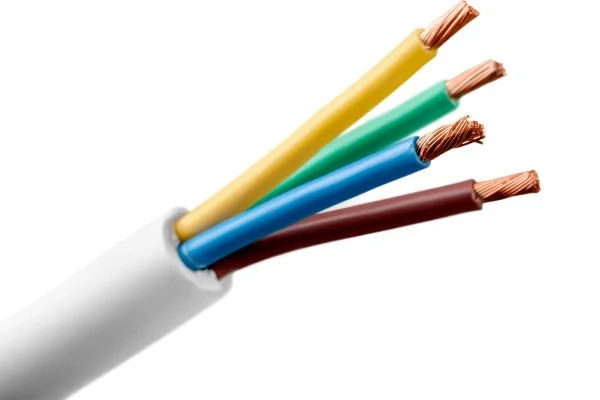Grounding is an essential part of your vehicle’s electrical system that’s often overlooked in the complex world of automotive electronics. If you are a car owner or a DIY enthusiast, you should know how to ground a wire in a car. Whether you’re working on a custom project, resolving an electrical issue, or simply maintaining your car, grounding wires correctly is crucial.
What Is Grounding and Why Is It Important?
In automotive wiring, grounding refers to connecting electrical circuits to the vehicle’s chassis or frame. The ground connection safely dissipates excess electrical current, reducing the risk of electrical shock, fire, or damage to sensitive electronic components. Keeping your car’s electrical system safe and intact depends on it.

It is impossible to overstate how important grounding is in a car. Electrical faults can cause malfunctions, erratic behavior, and even fires without proper grounding. Grounding ensures that electrical faults, such as short circuits, are dissipated safely by finding a low-resistance path.
How To Ground A Wire In A Car? Step By Step Guide

It is very easy to ground a wire if you follow the steps which are given below. The steps are as follows:
Step#1 Tools And Materials

It is essential to have the right tools and materials when grounding a wire in your car. Here are the essential tools you must needed:
- Multimeter
- Wire Stripper
- Crimping Tool
- Soldering Iron
- Heat Shrink Tubing
- Wire and Connectors
Step#2 Ensuring Your Safety
Safety is the first and most important step before you begin any electrical work on your car. Ensure that the car’s battery is disconnected to avoid accidental electrical shocks.

Additionally, it is important to wear appropriate personal protective equipment, such as insulated gloves and safety goggles. Check that the vehicle is on a level surface and that the parking brake is engaged to prevent any unwanted movement.
Step#3 Locating A Suitable Ground Point
In order to ground a wire in your car, you must identify a suitable ground point. The ground point of a vehicle is a metal surface that can serve as a secure connection for a wire.

It is common to ground a vehicle’s body or frame by touching bare metal. As a good electrical connection relies on metal-to-metal contact, make sure the area is clean and free of paint, rust, or other contaminants.
Step#4 Preparing The Wire
Preparing the wire itself is the first step in grounding a wire effectively. To ensure flexibility, leave some extra length on the wire after cutting it to the desired length.

Using wire strippers, strip the insulation off the wire end to expose the bare conductor. The electrical connection will be clean and efficient as a result.
Step#5 Check The Hardware

Inspect the hardware inside your vehicle to make sure it won’t cause problems if you ground a wire later. Remove all corroded or flimsy hardware and replace it if necessary with new hardware.
Step#6 Remove The Front Seat’s Back Bolt
The back of your front seat can be removed from the car by finding and unbolting the bolts. Most of the time, it is located at the bottom inside corner of each front seat.
If you need to replace your grounding wire in a car without a bolt, look for screws or other hardware holding the seat bottom in place.

Step#7 Take Your Car’s Front Seat Out

You can now remove the front seat from your vehicle. Before removing the entire seat from the vehicle, locate the grounding wire on your seat and pull it through its hole. On top of the floorboard, there should be a grommet that allows the cable to slide out.
Step#8 Measure The Grounding Wire

To locate a ground point, measure from your grounding wire’s hole on top of the floorboard to the back of your front seat where you removed the bolt. Cut a new length of wire to match the old one.
Step#9 Attach The New Grounding

Connect your grounding wire to your seat according to whether a bolt or screw is located on the bottom of the seatback. Where you found a ground point, you should attach the other end of the grounding wire there.
Step#10 Testing The Ground Connection
Test the connection after you’ve grounded the wire to ensure it’s working correctly. A multimeter or continuity tester can be used to check for low resistance between the wire and the vehicle’s frame. The ground connection should provide near-zero resistance, indicating a solid electrical path.
Key Considerations Before Grounding A Wire In A Car
Here are some considerations you should take before grounding a wire in the car. Here are a few:
Identifying the Correct Ground Wire

You must correctly identify which wire in your car needs grounding before you ground it. Ensure you don’t make any mistakes by checking your car’s wiring diagram to pinpoint the wire’s location. A professional automotive electrician can provide guidance if you’re unsure.
Troubleshooting Common Grounding Issues
The importance of understanding common grounding issues cannot be overstated. In the event that problems arise during or after the grounding process, be prepared to troubleshoot them. Connectivity problems, corrosion, and loose connections can all cause problems. You should regularly inspect and maintain your car’s grounding system to prevent potential problems and ensure that your vehicle’s electrical system functions properly. Consult a qualified technician if you encounter any problems.
Additional Tips and Best Practices
Following your knowledge of how to ground a wire in a car, you should take some additional tips that will help you a lot.Here are some tips for grounding your car wires successfully. I have gathered valuable insights and experience as an automotive technician that can help you achieve the best results.

1 Proper Wire Insulation
Grounding wires in a car should always have their insulation intact when being worked on. Wire insulation prevents moisture, dirt, and other contaminants from corroding and causing electrical problems. Be sure to thoroughly inspect a wire before connecting it to a ground point. To maintain a reliable electrical connection, replace frayed, cracked, or damaged wires with new ones.
2 Avoid Over-Tightening Grounding Connections
It is possible to cause problems by overtightening grounding connections. It is important to ensure a secure connection, but excessive force can damage the components and strip the threads on the bolt or nut. To tighten grounding bolts or nuts, follow the manufacturer’s torque specifications. This ensures a secure connection without harming the surrounding materials.
3 Anti-Corrosion Measures
Cars are exposed to a variety of environmental conditions, which can cause corrosion over time. Consider using anti-corrosion products, such as dielectric grease, to protect your grounding connections from corrosion. Use this grease to connect the wire to the grounding point and to the grounding point itself. By doing so, a barrier will be created that inhibits corrosion and extends the lifespan of the grounding connection.
4 Avoid Mixing Different Metals
It is important not to mix different metals when selecting grounding components, such as connectors, bolts, or nuts. A galvanic reaction can occur when metals are mixed, causing accelerated corrosion. All grounding components should be made from the same metal. Use copper connectors, bolts, and nuts when using copper wire, for example.
5 Regular Maintenance Checks
As part of your vehicle’s maintenance, it’s essential to include regular maintenance checks once you’ve successfully grounded a wire. Grounding connections can deteriorate over time due to wear and tear. Visually inspect your grounding system and use a multimeter to check for continuity. In order to maintain a reliable electrical system, address any issues or signs of corrosion immediately.
6 Protecting Your Grounding System from Moisture
Grounding issues are often caused by moisture. Keep your grounding system away from moisture-prone areas. Consider using waterproof enclosures or covers to shield grounding connections from the elements if you must place them in potentially wet areas. Grounding connections can be significantly extended by taking this precaution.
What Happens If You Don’t Ground A Wire In A Car?
1-Electrical Malfunctions
An electrical malfunction can occur if a wire in a car is not properly grounded. It is essential to ground the electrical circuit in order to complete it.
It is possible for wires not to function properly in the absence of a proper ground. Various issues can result from this, including flickering lights, dead batteries, and inaccurate sensor readings.
2-Safety Risks
Wiring in cars must be safe. Neglecting grounding can create safety risks. Electrical shorts and fires are more likely to occur without grounding. In order to prevent these dangerous situations, proper grounding is necessary to dissipate excess electrical energy.
3-Damage to Components
Leaving a wire unground can also damage your car’s components. When electrical systems lack a proper path for current to flow, they can generate excessive heat and damage sensitive electronics. In the long run, this can result in expensive repairs or replacements of various parts of the car.
4-Interference and Noise
Noise and electromagnetic interference can occur when wires are not grounded. Various car electronics, including radios, GPS systems, and sensors, can be affected by this interference. By grounding your car properly, interference is minimized, ensuring that your car’s systems function properly.
5-Failed Inspections
Some regions require cars to pass safety and emissions inspections. It is possible for improper grounding to result in a failed inspection, preventing you from legally driving your vehicle. To avoid this inconvenience and potential fines, all wires need to be properly grounded.
Conclusion
Knowing how to ground a wire in a car is a skill that empowers car owners and DIY enthusiasts alike. The steps outlined in this guide can enhance the safety and electrical performance of your vehicle. Prioritize safety, use the right tools, and follow best practices.
Wire grounding is essential for the maintenance, troubleshooting, and customization of your vehicle’s electrical system. Apply the knowledge you’ve gained here to keep your car running smoothly and safely.
